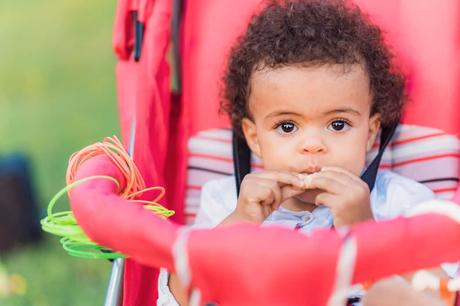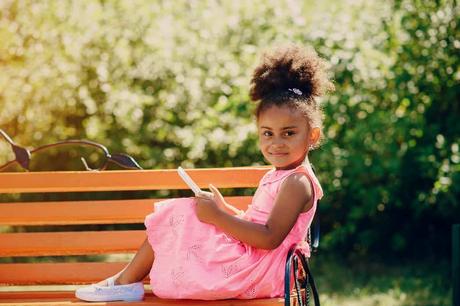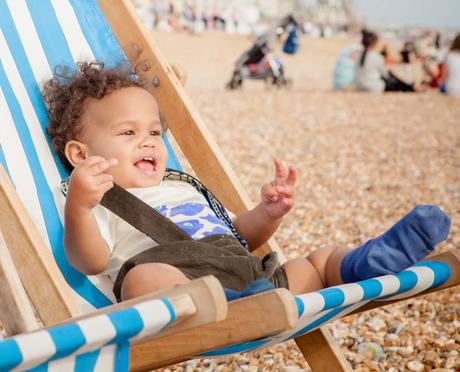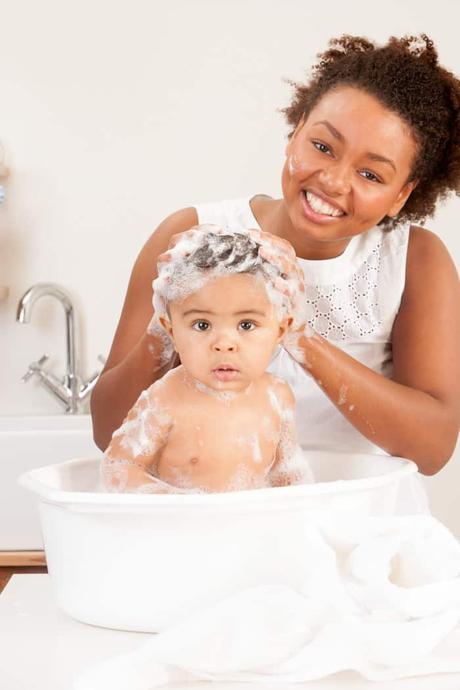Gone are the days when couples were tied to their races. Today couples are of many different kinds.
Latinos, coupled with Europeans, Asians coupled with Americans, Indian couple with Africans, the North men couple with native Americans, Caucasians, and so on.
This unrestricted diversity brings in the best of nature when babies are born from such kind of couples.
In many cases, the babies’ genes are equally obtained from both parents such that it can not be distinguished on which side the baby belongs to.
These genes are expressed through skin color, accent – although revealed much later during the baby’s life, hair type, and many more.
As a parent, especially a mother and expecting a biracial baby, these are some of the most important things to be prepared for.
Most parents mostly prepare for skin tone variations when expecting a biracial baby, forgetting that the hair type of a biracial baby will eventually dictate its life.
In most cases, one is not able to tell how the hair of a biracial baby will look like. Even with this uncertainty, be informed that it wouldn’t take long for a mixed race baby hair change to its natural hair texture.
In many cases, most mixed race baby hair change from their straight hair that curls a little bit when washed to a naturally curly hair at all times.
Content:
- What kind of hair will a mixed baby have?
- What should you expect from baby biracial hair?
- When to expect babies’ hair change?
- How to care for biracial baby hair?
What Determines Hair Type For Biracial Babies?

The hair of your baby is more likely to change when he/she grows older than not. The three different hair texture classifications are straight, wavy, and curly.
Our DNA mainly determines our hair texture. This results in a baby having a different type of hair from its parents.
It is not yet clear as to which parent gives most of his genes to a baby, but recent research has shown that paternal genes are more dominant than maternal genes.
In some cases, genes from both parents show equal dominance on the baby, while in some other cases, one parent’s genes dominate more than the other. Interesting, right?
For instance, a 50-50 share of genes is such that a father with curly hair coupling with a mother of straight hair results in a baby with wavy hair.
Other variations of hair texture are brought about by gene dominance from either parent.
In addition to the complexity of genetics, hair texture is also determined by the shape of their hair follicles.
Hair follicles are special openings on the skin that hair grows from. And the type of hair follicle is determined by the kind of genes you have.
Back to genes again? Don’t worry, it is not as complicated as rocket science.
Your DNA would dictate perfectly round follicles that give straight hair, while oval-shaped follicles give curly hair.
All this talk about genes and DNA trickle to one factor: race. Different races have a different genetic makeup that gives rise to different hair types.
What To Expect From Baby Biracial Hair

Many parents gave a bunch of their experience with their naturally curly hair when they were young.
Most of them like you are going a milestone to try and give their mixed race baby hair change the required attention to make their babies love their biracial hair.
Mixed race baby hair change over time. This includes a combination of elements like texture color and length.
A lot of cases have been linked to curly hair at advanced stages of life if the hair issue is not addressed at all.
However, this is not the only way to expect hair change on biracial babies.
Surprisingly, some biracial babies’ hair does not change a bit with or without the application of biracial baby hair care products.
When born with straight hair, their hair naturally thrives to a perfectly smooth and straight texture in their adult life. Though low in statistics, this scenario is inevitable.
You should be ready to expect any type of change of hair texture color, shape, and hair length as your baby grows old.
He/she might be born with perfectly straight or wavy hair. But eventually, it might gradually increase into its more natural curly shape.
The only remedy highly recommended by pediatricians is the application of biracial baby hair care products.
These hair care products might be universally the same for both non-racial and mixed babies.
Still, their type of application, intervals of use, and amount of application change highly dictates on especially how to care for biracial baby hair.
Mixed race baby hair change is not a new thing or something to be worried about these days. There are a lot of mixed race baby hair care products that will help you navigate through caring for your baby’s hair.
When To Expect Mixed Race Babies Hair Change

To understand this, let’s first know when a baby’s hair grows for it to change.
Some babies are born with a full head of hair, while others are born completely bald. Some babies born with full hair go bald within their first few months.
None of this is a cause for concern, as a baby grows hair of several different types in several different stages.
Did you know that babies start growing hair before they are even born? Babies develop a first layer called the Lanugo by the 14th week of pregnancy.
This layer is soft and reinforced with fine hair that starts to grow from his head and eventually covers the whole body.
Hair now becomes part of his body’s component until death.
So, when does baby hair change? Most pediatricians argue that your baby’s hair change starts to effect immediately after birth to about four years of age.
This period is applicable whether your baby is a blend of African, American, Ghanian, Caucasian, Latin, or European.
Initially, its hair is silky, straight or curly, and very soft, but it can become coarser.
African-American children’s final hair texture can be tightly curled or kinky, loosely curly, ringlets, or wavy.
The ultimate natural hair texture will be determined by genetics.
Whoops, Genetics again! We really cannot stop talking about this science, can’t we?
Caring For Biracial Baby Hair

How can you take care of your baby’s biracial hair?
When is the right time to change their hair care routine?
Which mixed race baby hair care products are best to use for a mixed baby’s curly hair?
Are these products recommended and safe to use, especially on your baby’s weak and developing immunity?
To answer all these questions, we must first look at some of the preliminary parameters involved in biracial baby hair change.
Washing the Baby’s Hair
The growth of your baby’s hair is entirely affected by how it is groomed in its initial stages of growth after birth.
A rule of thumb is that you only need to wash your baby’s hair once every week. You need not wash your baby’s hair every day.
Using your fingertips, use a recommended baby shampoo formulated for biracial babies to rub it on your baby’s scalp gently.
The shampoo should be completely rinsed off with lukewarm water. This procedure should not be performed daily when washing your baby.
Instead, when washing the baby, you can simply rinse its hair with just plain water. Care should be taken to avoid the soap getting into its eyes. A clean, soft towel should be used to pamper off water from its head.
How to Deal With Scalp Conditions
Sometimes, babies might experience the cradle cap conditions, which is characterized by white, yellow, or red patches on the baby’s scalp.
These patches are tempting to scratch and remove, right?
Do not do this because it might lead to the damage of your baby’s scalp. This is a health condition that does not cause itching on your baby’s scalp.
This can be managed by applying recommended baby olive oil to loosen the flakes before washing. There you go, do not scalp your baby’s head. Instead, use olive oil.
You can also read: What is the best diaper rash cream to use?
Also, a condition is known as cradle cap, which is characterized by thick scales that come off the baby’s scalp.
Do not be mistaken by cradle cap as dirt on the baby’s scalp and rush to wash it off often. This will cause a lot of harm to your baby.
Consult a pediatrician for necessary advice on washing and conditioning your baby’s hair. Or try applying oil, letting it settle and gently scraping it off with a baby’s comb.
Otherwise, check out on the cradle cap and do not confuse it with dirt.
Hair Ties To Maintain Straightness
This is more of a myth than a fact. If you’re lucky enough to have a baby with hair, the urge to do it up in hair bows or ties is nearly irresistible. Hair ties damage your baby’s hair.
However, unfortunately, if they’re loose, the baby can pull them out of her hair and swallow or choke on them.
Some stubborn babies even find ways of untying ties loose. Long hair can be managed by putting on baby hats and recommended secure ties.
Related: What does it mean when your baby pulls hair when falling asleep!
Babies have delicate and more fragile hair than adults. This makes their hair more prone to damaged. Putting tight ties on weak hair can cause traction alopecia, a type of hair loss.
With all these parameters in place, how to care for biracial baby hair becomes an easy task.
How to Wash Biracial Hair
**Some links on this page can take you to Amazon.com, where you can see prices, customer reviews, product specs, etc … Please note that we only share stuff we love. We may earn a small commission if you buy through our links.
Biracial hair is, at most times, subtle and need not be washed a lot. Target an average of three to four times a month to wash their hair. This includes washing hair during bath time.
Keep this routine on the check to maintain their hair moisture as they grow old. Moisturized hair for biracial babies helps maintain and improve their general hair health.
Moisture also aids in the protection of their hair against germs, which might otherwise lead to hair complications.
Mixed Chicks shampoo is a recommended and safe shampoo to use it on biracial babies.
This shampoo works well because, again, their hair is excellent, and moisture loss is not experienced when the shampoo is used once or twice a week.
However, since mixed race baby hair change with time, because there will be a significant change in the baby’s hair moisture and entanglement.
At this point when your baby is a bit older to mumble around the home, you should now change this hair care routine for mixed curly hair.
Changing Hair Care Routine for Mixed Curly Hair
Mixed curly hair is undoubtedly a different and challenging type of hair issue. When in a family surrounded by straight-haired members, you will fall into the trap of care routines meant for straight hair – brushing and washing it every day.
Or you are even treating it like curled hair by oiling it from time to time.
However, don’t completely rule this out because it might work for some babies if their hair is super fine to adapt to any change.
When new to biracial hair, your only sources of information are articles related to biracial hairs. Indeed, there is no watch and learn. What products you should be using are dictated by these articles from related journals. But don’t worry, since we got you covered.
These listed mixed-race baby hair products will help you with your baby’s haircare.
- Sturdy, wide-tooth comb
- Cantu conditioner
- Satin cap
- Cantu curl activator
- Scrunchies
- Shea Moisture Curl Enhancing Smoothie
- Kinky Curly Curling Custard
- Shea Moisture conditioner
- Mixed Chicks Leave-in conditioner
Do not experiment on your baby with products that you are not sure of.
The only task you have is to test with which of the above-listed products are suitable for your developing baby.
After using Mixed Chicks product for your young toddler, advance to the above-listed products.
How to Condition Biracial Hair
Finally, let us get right into business. But before this, get it into your mind that the baby’s hair and scalp are highly delicate and fragile.
When conditioning biracial hair, use the conditioner with a wide-tooth comb to comb out the baby’s hair. For much more fine hair, it is advisable to use fingers to apply the conditioner.
Some brushes come with baby kits, which are given out when buying different baby products. Do not use these kinds of brushes as alternatives for the babies comb to brush their hair.
Using these brushes will lead to the destruction of the curly nature of the baby’s hair, which can cause frizz and even breakage of hair.
Remember to rinse off the conditioner with lukewarm water thoroughly. Don’t leave the extra conditioner on the baby’s hair because they don’t need conditioner left on them like adults for moisturizing.
Drying Of Biracial Baby Hair And How To Apply Hair Products
Remember us mentioning the Mixed Chicks leave product? Well, here is where we use it after rinsing off the conditioner.
This product is generally used at four months old. The mode of application is such that you should apply when hair is still wet to avoid it getting frizzy l, sticky, and an irregular pattern of curls.
Mixed Chicks leave product leaves the hair moist without weighing it down. It also maintains the regular pattern of curls all over the head until tampered with when sleeping.
However, the effectiveness of this leave-in product fades away after some time. As the baby ages, the firmness of the product becomes smaller and smaller. This is because the curly pattern begins to take its natural shape.
Avoid towel drying at all costs. Letting the hair air dry will allow the lovely curls to settle in naturally and avoid being frizzy.
Let it hair dry even if the hair is long. It is a baby, it is not trying to catch a bus downtown to school or work!
Appling The Final Touch On The Hair
This is not as complicated as it feels. Styling your baby’s hair is easy and fun. Furthermore, don’t you want your baby’s hairstyle to blend in with that cute smile?
Thoroughly wet the baby’s hair with lukewarm water and comb it up using a spray bottle and a finger comb, respectively.
Apply an adequate amount of leave-in conditioner on the hair and carefully comb it up using the finger comb.
Make sure that the leave-in conditioner is evenly distributed in the hair. Use the right amount of conditioner, depending on your baby’s hair length.
Do not use too much or too little – it will lead to sticky limp curls or stiff bristle curls, respectively.
Again, use your fingers to smoothly raise the curls from the scalp to the hairs’ tips. Make sure not to do too much touching after styling to avoid frizzing the hair.
When all these helping tips and mixed race baby hair care products are put in place, how to care for biracial baby hair becomes a norm, and art well mastered.
All through, the most important parameter is to keep your baby’s hair relatively moist to form a basis for the natural curls to form. They also set a firm foundation for lifelong healthy hair for your baby.
